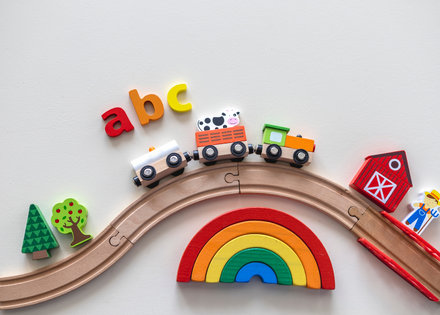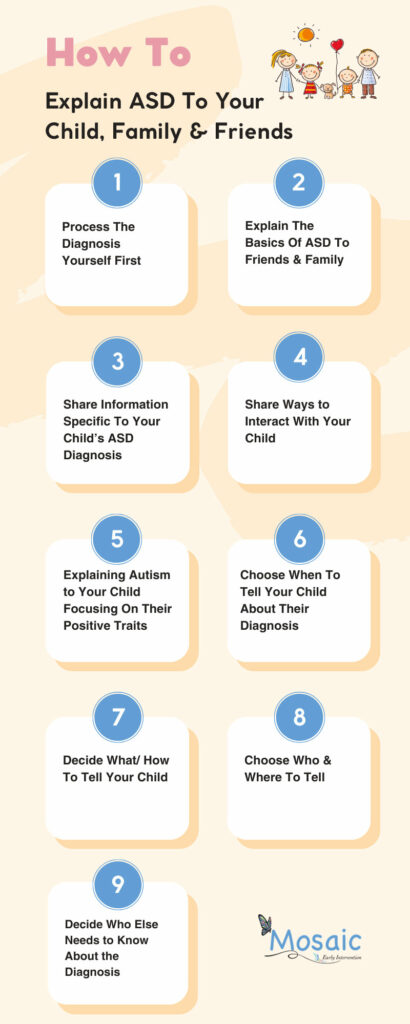If you’ve recently learned that your child has ASD (Autism Spectrum Disorder), you may be experiencing a mix of emotions, wondering about the significance of this new diagnosis, what it might involve, and how to explain autism to your child and their siblings.
When confronted with the responsibility of explaining the diagnosis, you might find yourself pondering the optimal timing for sharing it with your child, family, and friends. In this article, we will explore the common questions parents typically face during this phase and provide guidance drawn from our experience in supporting families through this transition.
Recognising the importance of cultivating empathy, promoting open communication, and building a strong support network for your child, our aim is to provide practical advice and strategies to help you effectively navigate the diagnosis.
Key Takeaways:
- Prioritise empathy, open communication, and support when explaining Autism Spectrum Disorder (ASD) to children, family, and friends.
- Begin by understanding the ASD diagnosis, convey the basics, and emphasise your child’s unique strengths.
- Use positive language, share resources, and choose the right time and setting for discussions.
- Involve your child in the process, granting them agency and trust, and prioritise their emotional well-being to create a supportive environment for their journey with ASD.
1. Process the Diagnosis Yourself First
Receiving an ASD diagnosis can be unexpected and overwhelming. One of the initial steps you can take is to allow yourself some time for the news to settle before discussing it with your child.
Coming to terms with the diagnosis may involve various actions, such as seeking educational resources to gain a deeper understanding of what it entails. Consulting with a healthcare specialist for guidance on the next steps is also beneficial.

In addition, make room for processing the information, which could include sharing your feelings and thoughts with a close family member, friend, or counsellor. Engaging in activities like walks or other stress-relief techniques can help you manage this newfound information.
Deciding when or if to share the diagnosis is a highly personal choice that can differ from one family to another, depending on individual circumstances.
2. Explain the Basics of ASD
When sharing the diagnosis to family and friends, it may be helpful to start with the basics of ASD and what may be involved, including social and communication challenges, repetitive behaviours, sensory sensitivities, and attention issues.
At this stage you may not have all the information to hand on how the diagnosis may impact your child, so starting with a basic explanation is a helpful way to help those around you understand.
Your health care practitioner may have suggested helpful resources, and you may like to share these with family and friends to understand autism better.

3. Share Information Specific to Your Child’s ASD Diagnosis
An Autism Spectrum Disorder diagnosis varies greatly between individuals, both by specific symptoms and the severity or level of autism, therefore it’s important to explain how ASD specifically impacts your child if you are able to.
This can involve recognising their strengths and areas where they might face challenges while emphasising their uniqueness. If you anticipate that they will need speech pathology or early intervention services, you can also inform your child and loved ones about the availability of specialised resources and services designed to assist them with any difficulties they might encounter.
4. Share Suggested Ways to Interact With Your Child
When discussing your child’s diagnosis with others, you may like to share information about the best way to interact with your child. This might include important information about your child’s routines and goals and what you are working on.
You may also like to mention any do’s and don’ts when it comes to interacting with your child.

5. Explaining Autism to Your Child
When discussing autism (ASD) with your child, the approach may vary depending on their age. A great way to begin is by emphasising the positive aspects of their diagnosis. Highlight unique traits and strengths that make them special. You can also share stories to illustrate their uniqueness, mentioning that these traits are common in individuals with ASD.
If you, as a parent, also have ASD, sharing your positive experiences can be helpful for your child’s understanding [1]. It’s all about framing the autism diagnosis in a positive way so they don’t feel fearful or concerned.
It’s important to gently introduce the areas where your child might need extra support. You can explain that they will receive assistance from healthcare specialists, making them feel more comfortable with the idea.
6. When to Tell Your Child
The timing for discussing the diagnosis with your child depends on various factors, such as their age, readiness to comprehend the diagnosis, and individual personality traits. In the case of a young child, you might opt to wait until they’re older and better equipped to comprehend it. Or find a simplified way of explaining it to them.
Understanding ASD may require multiple conversations, as your child may have many questions. It’s advisable to access educational resources to gain a solid understanding of the basics so that you can effectively share this information with your child if necessary.
Your healthcare practitioner(s) will also be available to support you during this transition and address any questions you may have.

7. What/How to Tell
What and how to tell your child is deeply personal, however here are a few things you might like to consider:
- Start with the basics, and what you’ve been told by your healthcare practitioner, emphasising that autism is a condition and that there is support available
- Use positive language in a warm tone so that your child has more positive emotions around the diagnosis.For example instead of using words like ‘deficit’ or ‘lacking’ you could say ‘challenge’ or ‘difficulty’Instead of saying ‘at-risk of autism’, say ‘high -probability of autism’ [2]
- Highlight the positive aspects or traits, whether it’s simply pointing them out or telling a story or example of their strengths
- If relevant, describe what help or services you may seek out for your child, so they understand there will be extra support on hand
- Reading children’s books can also be a valuable way to explain what ASD is and how it can affect different children. It offers a unique approach to helping your child understand this new information.
- You may like to discuss other people that you know who have autism, or even some famous celebrities
We have parents say things such as their diagnosis makes them like a superhero, highlighting the positives of their diagnosis rather than the challenges.
8. Who Tells/Where to Tell
You may like to tell your child about their diagnosis when they are at home or somewhere familiar so that they are comfortable. It’s best to choose a time when you are both relaxed and calm. Creating a comfortable and safe environment for the conversation will help your child feel more confident in hearing about their diagnosis.
As a parent, you might choose to be the one to inform your child, or you could involve your healthcare professional in the discussion. The benefit of having a healthcare professional present is their expertise, which allows them to address any questions that may arise and offer additional information as needed. Ultimately, the decision should be based on what you believe will be most effective for your family.
9. Who Else Needs to Know
If your child is at daycare or school you may wish to discuss the diagnosis with their educator or teacher to determine if any changes need to be made to accommodate their learning.
For older children in particular, discussing with your child who they want to know about their diagnosis is important for several reasons. First and foremost, it empowers the child to have agency over their own story and fosters a sense of control in a situation that may otherwise feel overwhelming.

Additionally, by respecting their opinion and preferences, you build trust and open communication channels, allowing them to express their fears or concerns about potential negative reactions from peers. This consideration ensures that the child’s emotional well-being and self-esteem are protected, ultimately contributing to a more positive and supportive environment.
We have had an instance where one of our parents mentioned their diagnosis to another parent in front of them and their peers, this child was really upset about it and asked their parents not to tell anyone else. So, it was then just a matter of everyone respecting their choice, continuing to support them through navigating their diagnosis and giving them the control as to whom they tell and when.
Conclusion
In this article, we have shared some tips on how to explain Autism Spectrum Disorder (ASD) to your child, family, and friends. We’ve emphasised the importance of nurturing empathy, fostering open communication, and building a strong support network. Additionally, we’ve highlighted the value of sharing the diagnosis with the child, respecting their opinion, and using resources like children’s books.
In addition, we’ve mentioned the role of healthcare professionals in providing expert advice and support to families throughout this journey. Promoting understanding and empathy beyond the diagnosis itself is pivotal, creating a supportive environment for families as they navigate their ASD journey.
Sources
- Autistic parents’ views and experiences of talking about autism with their autistic children
- Changing the story: How diagnosticians can support a neurodiversity perspective from the start

